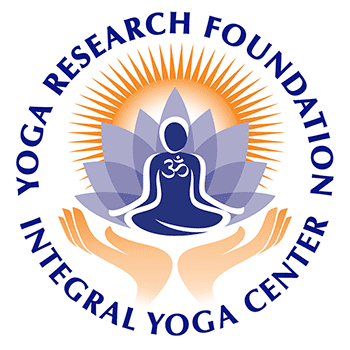Unlocking the Self: A Journey through Raja Yoga with Sri Swami Jyotirmayananda
Introduction to Part 5: Building on the Foundations of Integral Yoga
As we continue our journey through “Unlocking the Self,” inspired by Sri Swami Jyotirmayananda’s “Integral Yoga – The Secret to Enlightenment,” we reflect on the foundational teachings of Raja Yoga that have led us to this point:
- Part 1: “Foundations of Inner Exploration” introduced the Yamas, the five ethical guidelines that shape our interactions with others and the world around us. These principles form the ethical base crucial for personal and spiritual growth.
- Part 2: “Strengthening Personal Observances” focused on the Niyamas, five personal practices that promote internal purity, discipline, and self-study. Together with the Yamas, the Niyamas establish a strong inner environment conducive to deep spiritual practice.
- Part 3: “Building on Ethical and Personal Disciplines” explored the interconnectedness of these foundational principles, demonstrating how they support the subsequent steps in Raja Yoga.
- Part 4: “Advancing Physical and Energetic Practices” introduced Asana, Pranayama, and Pratyahara as essential techniques for cultivating physical health, vital energy control, and sensory mastery.
Part 5: Mastery of Mind through Concentration, Meditation, and Samadhi
Introduction to Higher Practices in Raja Yoga
In the transformative journey of Raja Yoga, the practices of Asana, Pranayama, and Pratyahara form the preparatory stages that cultivate bodily health and sensory control. These are essential but only the preliminary steps to deeper spiritual practices. Part 5 of our series explores the profound internal disciplines of Raja Yoga: Concentration (Dharana), Meditation (Dhyana), and Superconsciousness (Samadhi), which are central to achieving the ultimate goal of yoga—the union with the Absolute.

Concentration (Dharana): The Art of One-Pointed Focus
Concentration, or Dharana, is about cultivating a laser-focused mind. It involves directing and holding the mind’s attention on a single point or object, such as a candle flame, the moon, or even an imagined image. This practice is not just about narrowing focus but maintaining a clutter-free mind that remains undistracted by external or internal disturbances. Achieving mastery in concentration allows for tasks to be completed with greater efficiency and less fatigue, unveiling vast inner potential and clarity.

Transitioning from Concentration to Meditation (Dhyana)
As the skill of concentration deepens, it naturally progresses into Dhyana, or meditation. This stage is marked by the seamless flow of focus where the effort of concentration evolves into an effortless state of being. Meditation deepens this focus to a sustained stream of awareness, unbroken by the mental noise that typically invades our quiet moments.

Samadhi: The Peak of Spiritual Experience
The culmination of deep meditation is the attainment of Samadhi, a state of superconsciousness where individual awareness dissolves into universal consciousness. In Samadhi, the meditator loses the sense of self, merging into the bliss and peace of absolute existence. This transcendent state is often described as a profound joy that surpasses all ordinary experiences, where nothing but pure consciousness remains.
Samyama: Integrating Concentration, Meditation, and Samadhi
Collectively known as Samyama, the practice of Dharana, Dhyana, and Samadhi together brings about a transformational power that can unlock psychic abilities and deeper spiritual insights. However, these powers are not the goal but byproducts of the profound inner clarity and unity achieved through Samyama.
Path to Enlightenment
Understanding that the mind is not a fixed entity but a dynamic field of consciousness is essential. Progress in these practices does not occur overnight but through consistent and patient effort. The transformation through Dharana, Dhyana, and Samadhi involves a gradual unveiling of the inner self, leading to enlightenment or the realization of one’s true nature and union with the cosmic essence.
Practical Applications of Concentration, Meditation, and Samadhi
Implementing Techniques from Part 5
The practices of Concentration, Meditation, and Samadhi offer profound benefits that can transform our daily lives. Here are practical ways to incorporate these techniques:
- Daily Concentration Practices: Start by dedicating a few minutes each day to focus solely on a single object, like a candle flame or a specific sound. This practice sharpens your ability to concentrate in other areas of life, enhancing mental clarity and task efficiency.
- Regular Meditation: Establish a regular meditation routine, ideally in a quiet space where you can practice undisturbed for a set period. This habit not only deepens your meditation skills but also promotes a sense of peace and well-being throughout your day.
- Mindfulness of Superconscious States: As you become more experienced in meditation, remain mindful of the moments when you feel a shift towards deeper peace or joy—these are preliminary glimpses of Samadhi. Acknowledging these experiences can help you approach them more consciously in future sessions.
Preview to Part 6: Understanding Your Nature and Moods
As we have explored the innermost practices of Raja Yoga in Part 5, we’ve prepared the ground for a deeper understanding of the mind and its fluctuations. Part 6 of our series will explore the Three Gunas (Sattva, Rajas, Tamas), which are essential concepts in yogic psychology that explain our moods, behaviors, and predispositions.
- Introduction to the Three Gunas: The Gunas are fundamental qualities of nature that manifest in various forms, including our mental states. Understanding these can provide insights into our personal challenges and spiritual growth.
- Practical Implications: We’ll explore how the dominance of each Guna influences our daily actions, decisions, and spiritual practices. Recognizing and balancing these qualities can lead to a more harmonious and fulfilling life.
- Linking Practices to Psychological States: Part 6 will connect the practices of Dharana, Dhyana, and Samadhi with the psychological insights provided by the Gunas, offering a comprehensive framework for self-understanding and spiritual development.
Explore the depths of the mind with Swamiji’s detailed guide on ‘Raja Yoga Sutras,‘ available from the Yoga Research Foundation. This book is a key to transforming your inner self. Enhance your Integral Yoga experience by tuning into Swamiji’s inspiring lectures on the Bhagavad Gita, broadcast live every Sunday night at 7:30 pm EST on YouTube. Keep current and enrich your practice with updates on WhatsApp—click here to stay connected.

